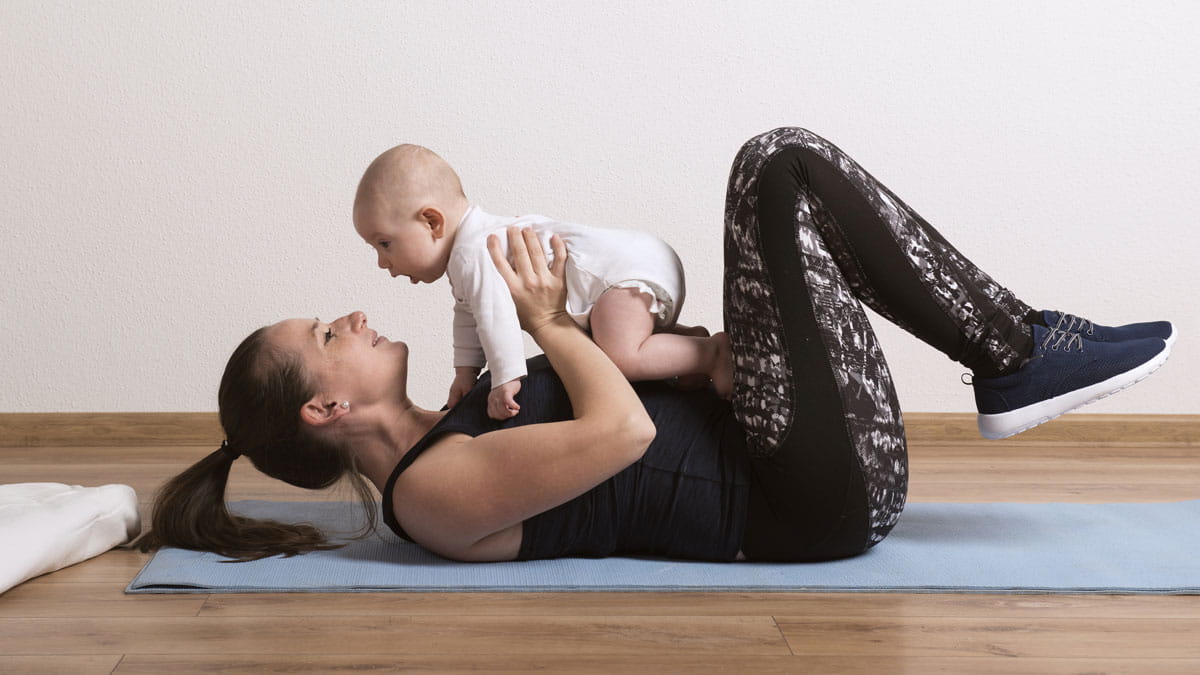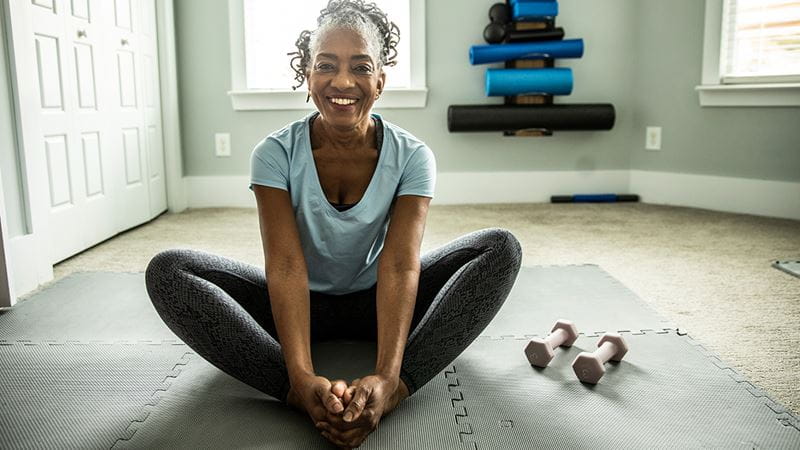Blog article
5 exercises for pelvic floor health

Factors such as pregnancy, aging, and lifestyle choices can weaken these muscles, leading to various challenges from urinary incontinence to pelvic organ prolapse.
Whether you're looking to prevent issues or improve existing conditions, incorporating these five exercises into your routine can make a significant difference in your pelvic floor strength and overall quality of life.
What is the pelvic floor?
The pelvic floor consists of muscles and connective tissues that support the bladder and bowel in men, and the bladder, bowel and uterus in women. A strong pelvic floor is vital for maintaining bladder and bowel control, supporting pelvic organs, and enhanced sexual function in both men and women.1
What are the symptoms of a weak pelvic floor?
A weak pelvic floor can lead to loss of bladder control and, less commonly, anal incontinence, where individuals struggle to control the passage of gas or faeces (poo). Additionally, weakened pelvic floor muscles may contribute to sexual challenges such as diminished vaginal sensation as well as painful intercourse and/or vulval discomfort.2
Pelvic floor weakness can also cause internal organs like the bladder and uterus to descend or prolapse into the vagina. Symptoms such as a noticeable bulge in the vaginal area and deep vaginal discomfort are common.2
What are the causes of a weak pelvic floor?
Factors such as pregnancy, childbirth, aging, and obesity can weaken pelvic floor muscles, leading to pelvic floor disorders like urinary incontinence and pelvic organ prolapse.1
Additional causes include:
- Lower levels of oestrogen after menopause
- Chronic constipation leading to repeated straining on the toilet
- Constant coughing
- Pelvic surgery and/or radiotherapy, including a hysterectomy or prostate surgery
- Heavy lifting
- High impact exercise
Exercises for pelvic floor health
1. Kegel exercises
How to perform: You can identify your pelvic floor muscles initially by stopping the flow of urine mid-stream or by tightening the muscles that keep you from passing gas. Contract these muscles for eight seconds, then relax for eight seconds. Repeat this cycle 8-12 times, three times a day.3
2. Bridge pose
How to perform: Lie on your back with knees bent and feet hip-width apart. Lift your hips toward the ceiling, squeezing your glutes and engaging your pelvic floor muscles. Hold for 5-10 seconds, then lower back down. Repeat 10-15 times.4
3. Squats
How to perform: Stand with feet shoulder-width apart. Lower into a squat position, keeping your back straight and knees behind your toes. Engage your pelvic floor muscles as you return to standing. Start with 10-15 repetitions.4
4. Pelvic tilts
How to perform: Lie on your back with knees bent and feet flat on the floor. Tighten your abdominal muscles and press your lower back into the floor. Hold for a few seconds, then release. Repeat 10-15 times.4
5. Bird-dog exercise
How to perform: Start on your hands and knees, with wrists aligned under shoulders and knees under hips. Extend your right arm forward and left leg back, keeping your hips and shoulders square. Engage your core and pelvic floor muscles to maintain balance. Hold for 5-10 seconds, then switch sides. Repeat 10 times on each side.4
How to incorporate pelvic floor exercises into your routine
Like any form of exercise, consistency is key. Aim to perform these incorporate pelvic floor exercises at least three times a week, gradually increasing repetitions and intensity as your strength improves. Remember, it's normal to experience some initial difficulty isolating these muscles, but as the saying goes, practice makes progress!
How HBF can help
With benefits for physio visits, HBF extras cover can help you feel your best.
Physiotherapists specialising in pelvic floor health are trained to assess and treat conditions such as urinary incontinence, pelvic organ prolapse, and pelvic pain through personalised exercise programs and therapeutic techniques.
Your physiotherapist can guide you in performing correct pelvic floor exercises, ensuring you engage the muscles effectively to strengthen them. They also provide valuable education on lifestyle modifications and behavioural techniques to improve bladder and bowel control.
Whether you're recovering from childbirth, managing age-related changes, or seeking preventative care, consulting a physiotherapist can significantly enhance your pelvic floor health, restore confidence, and improve overall quality of life.
